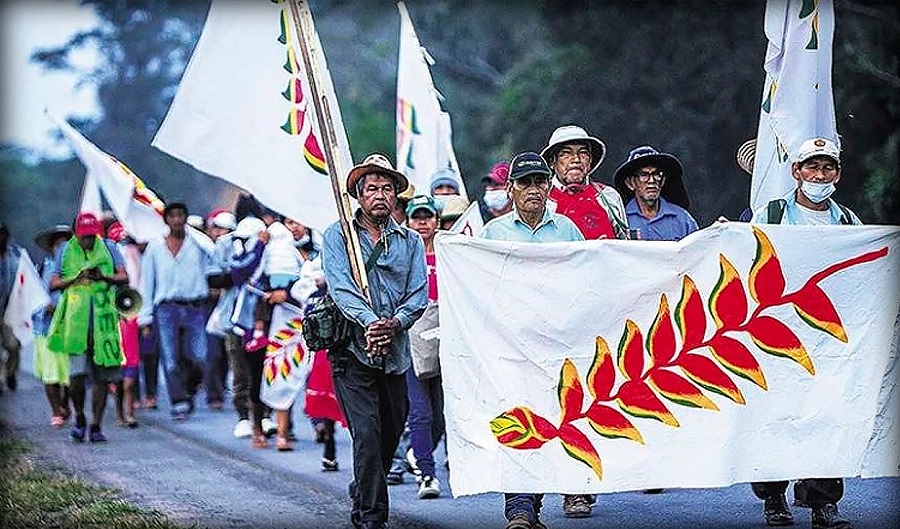RIO DE JANEIRO, BRAZIL – Begun last August 25 in the city of Trinidad, in the department of Beni, the march has covered 348 of the 550 kilometers it plans to travel in order to draw the attention of the national government, which has repeatedly stated that it is unaware of the protest’s list of demands.
On the other hand, the country’s president Luis Arce held a meeting with representatives of indigenous organizations in the city of Trinidad, where he assured that “it is the Beni indigenous movement.”

MARCH DEMANDS
The president of the Beni Indigenous Peoples Central (CEPIB) Abdón Justiniano stressed that “the Government knows what the demands are” and that their full content will be made known once the march of some 200 men, women, elders and children reaches its destination.
Justiniano underlined that the main demand is “the defense” of indigenous territories, of “renewable and non-renewable” resources and of the cultural identity of several lowland indigenous peoples other than the Aymara or Quechua majorities.
The leader indicated as the main issue the “subjugation, encroachment and establishment of new illegal settlements in indigenous territories,” mostly of the so-called “intercultural” groups of Quechua or Aymara peasants.
These settlements aim to “take territory,” “destroy forests,” “parcel” the lands in peasant communities and then “sell them to third parties” and move elsewhere, since many of these people have land in other regions, Justiniano said.
He also denounced that this situation has led to cultural tension since their identity “is being subjugated” with the educational model and customs that reflect the Andean rather than local customs such as dances and languages.
THE TARGET SANTA CRUZ
Unlike past indigenous peoples’ marches, the 1990 march that demanded “dignity and territory” or the 2011 and 2012 marches calling on the government of ex-president Evo Morales to halt a highway project that would cross a nature reserve, the goal is not to reach La Paz but Santa Cruz instead.
The reason for not heading to La Paz, seat of the country’s Executive and Parliament, is “because of centralism” and because Santa Cruz, considered Bolivia’s most economically powerful region, also represents the cultures and indigenous peoples of the country’s lowlands, eastern and Chaco regions, the leader said.
The march leaders expect that in Santa Cruz the mobilization’s specific demands will be revealed and that it will be the place where the government of Luis Arce will “come down.”
A PARALLEL MEETING
In contrast, Arce held a meeting with several representatives of the Beni indigenous peoples to address demands such as land tenure, production and health care, he said.
In his statement, the Bolivian president assured that there are “personal interests,” pointed out that “these should not exist,” that “there must be unity” and that “the majority is always heard,” something that was perceived as a reference to the march that has now reached the department of Santa Cruz.
Arce mentioned that “the right-wing is the one that has divided” the indigenous movement in Beni as now there are two similar organizations when in the past there was only one and urged for “unity.”
The president emphasized that the meeting was aimed at listening to grassroots leaders and coordinating aspects such as vaccination against Covid-19 through medical brigades in indigenous communities.
On the other hand, the indigenous marchers’ leaders proposed to invite the president and vice-president, as well as the heads of the Senate, the Chamber of Deputies and the Judiciary to be in Santa Cruz for a dialogue at the highest level.

